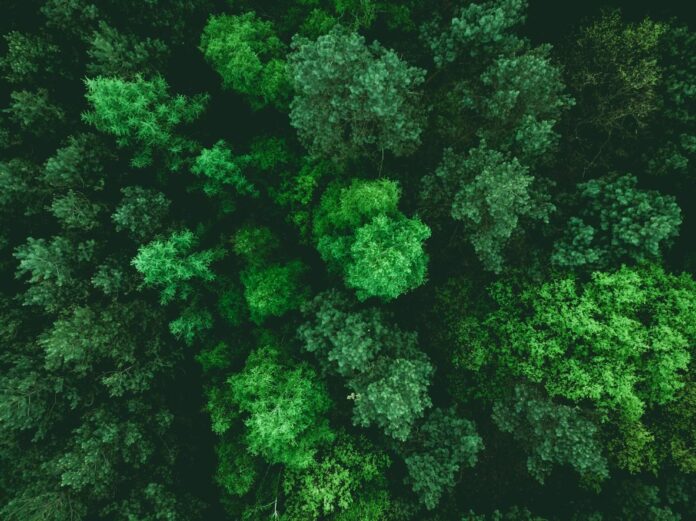The link between the natural world and public health is often overlooked, but a person’s long-term well-being fully depends on a stable, predictable environment.
The World Health Organization and the United Nations urge countries to restore environments and aggressively curb greenhouse gas emissions to protect human health.
As climate change and pollution proliferate around the world, illnesses caused by environmental factors are on the rise and medical professionals are increasingly warning people about the growing health consequences.
Without urgent and immediate action, however, millions of lives will be unnecessarily put at risk in the years ahead.
Here are five growing environmental health threats you should be aware of.
Air pollution

Image: DAVID HOLT
Air pollution comes from various sources – car exhaust, factory smog, construction dust, cookstove fumes, and more.
As the tiny particles and gases that make up these emissions swirl in the air, they get breathed in by humans, causing extensive and long-term health problems. In fact, ultrafine particles penetrate the blood stream once breathed in and travel to every part of the body, potentially harming every cell.
Air pollution kills an estimated 8.79 million people each year, and primarily affects people living in poverty.
In recent years, pollutants like particulate matter and ozone have been increasing in countries like the US, leading to tens of thousands of additional premature deaths.
Countries like India, meanwhile, have cities with air pollution levels 10 to 20 times greater than the maximum recommended level by the World Health Organization.
Read More: Air Pollution in the US Has Surged Under the Trump Administration
Many air pollutants accelerate climate change. For example, aerosols released by air conditions tear holes in the ozone layer, causing more solar radiation to reach the Earth.
Worsening climate change also exacerbates the health consequences of air pollution. As the world heats up, and heat waves become more common, respiratory activity becomes more difficult. If the air is filled with pollutants, than the respiratory problems triggered by extreme heat can be especially hazardous. This is why it is crucial to have functioning air conditioning if you live somewhere known for extreme temperatures. It is never a bad idea to seek out high quality ac maintenance services if you’re worried about the heat, so this may be something that you want to look into.
Drug-resistant infections

Image: Freestocks.org, Unsplash
Antimicrobial medicine is one of the greatest medical breakthroughs of all time. But the irresponsible overprescription and industrial misuse of these powerful drugs has led to a growing epidemic of antibiotic resistance.
By 2050, the super bacteria created by these practices could kill upwards of 10 million people annually.
“Superbugs” form in hospitals, in patients who don’t follow through on prescriptions, and when antibiotics are improperly prescribed. Hospitals are also contending with the rise of deadly fungus resistant to medical treatment that seeps into the air and becomes nearly impossible to remove once it arrives.
Superbugs also affect humans in less direct ways.
Read More: Drug-Resistant Malaria Is Now Spreading ‘Aggressively’ Throughout Southeast Asia
Factory farming operations, for example, feed their animals billions of dollars worth of antibiotics every year to prevent the spread of infections. In the process, antibiotic resistant bacteria develop and spread to people who eat meat.
During rainstorms, the feces from these livestock washes into bodies of water, contaminating drinking supplies.
Mosquito-borne illnesses
Image: flickr/World Bank Photo Collection
Mosquitoes are the apex predator of humanity, estimated to have killed half of all the humans who have ever existed.
Mosquitoes, the tiny insects that they are, don’t kill directly. Instead, they infect people with an array of devastating diseases – dengue, malaria, zika.
More than 2.7 million people die from malaria each year, and hundreds of millions more get infected with the virus.
As greenhouse gas emissions warm up the planet, mosquitoes have been able to move into new, warmer territories, exposing millions of previously shielded people to diseases.
Read More: Philippines Declares Public Health Emergency Amid Outbreak of Deadly Mosquito-Borne Virus
The mosquito season is also lasting longer than usual because of rising temperatures.
In fact, half of the global population could become at risk of mosquito-borne diseases by 2050.
Heat waves

Image: Francisco Seco/AP
Heat waves arrive suddenly and affect people swiftly. Mere hours spent outside in a heat wave can result in major health consequences.
The very young, the very old, people living in poverty, and outdoor laborers are at the highest risk of heat-related health problems.
Severe heat waves can cause dehydration, heat exhaustion, and heat stroke. During severe heat waves, hundreds and even thousands of people in urban areas can die.
Read More: Blistering Heat Wave in Japan Kills 57 and Sends 18,000 to Hospital
As greenhouse gas emissions warm up the planet, heat waves are becoming more common and intense. In the decades ahead, mega heat waves could become the new norm, killing tens of thousands of additional people each year.
Micro-plastic contamination

Image: Flickr / Proyecto LIBERA
Plastic production has risen exponentially since the 1950s, when the industrial process went mainstream. In fact, half of all plastic was made after the year 2000.
The vast majority of plastic is used once and then thrown away, and very little of it gets recycled. Instead, most plastic waste ends up in landfills, or pollutes land and marine environments. In both cases, plastic breaks down into microplastics that pervade the air, seep into soil, and float in the oceans. Many businesses invest in solutions to help curtail their plastic waste output and lower their impact on the environment. Plastic balers and crushers for rent or purchase from phs Wastekit are a great way to stay environmentally friendly. They save money and help make the waste easier to transport safely.
Marine animals eat large amounts of microplastics as they go about their lives, which gets transferred to people who eat fish. Whilst some farming methods for fish keep this in mind (like globalsalmoninitiative.org/en promoted methods), others do not. Common seasonings like salt have microplastics mixed in. These tiny particles make their way into public and private water sources, and get breathed in on a daily basis.
Read More: Every Marine Animal Studied in This Report Contained Microplastics
The average human consumes an estimated 70,000 microplastics each year, but it’s still unclear what, if any, health consequences this causes. Scientists believe that microplastics likely trigger inflammation throughout the body. Since plastic often contains carcinogenic materials, and becomes a magnet for toxins in the environment, it’s also possible that microplastics leech harmful substances in the body.
Story credit to Global Citizen, Joe McCarthy.
Photo credits to Stock Photos.




































